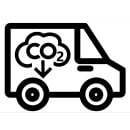In order to use this website you need to accept the use of Cookies , our Privacy Policy , and our Terms and Conditions.
Cannabis and Water Quality: PPM & EC

Want access to a world of information? Join our Cannabis Growers Club! Here you will be able to learn more about growing cannabis as well as get some great tips and tricks from fellow growers to take your growing skills to the next level.
TAKE ME TO THE CANNABIS GROWERS CLUB OF SOUTH AFRICA
If you have ever tried to learn about cannabis online or through YouTube, you have probably come across many abbreviations. The two we will be discussing in this article is PPM and EC. These are both more advanced aspects of growing cannabis that will improve your water quality and push up your growing skills.
What is PPM?
PPM stands for parts per million and is a unit of measurement used by growers in cannabis cultivation to refer to the concentration of Total Dissolved Solids. This measurement helps growers see exactly how many minerals and other substances are in their water.
Why is it Useful?
You may be wondering why this is useful for growers? It is useful because plants can only take in a certain amount of minerals and nutrients at a time, knowing this amount will guide your next feed and prevent you from over or under feeding your plants and prevent any possible nutrient burn. This information is also useful for DWC growers who need to know the current condition of their reservoir water.
What is EC?
EC, or electrical conductivity, is another measurement that helps determine the amount of nutrients present in the water or growing medium. The higher the nutrients in the medium, the higher the EC reading will be of your run-off.
How to Measure PPM
PPM is measured in parts per million. 1 part per million is equal to 1 mg of solubles per litre of water.
A TDS meter is used to measure ppm. There are many different types of TDS meters available all with varies abilities, some also measure temperature or have hold buttons, some TDS meters also measure a higher range of ppm than others.
Step 1: Get a TDS meter.
Step 2: Get some Calibration Solution. Meters sometimes require calibration before use and from then will need to be regularly recalibrated to extend longevity and ensure accurate readings.
Step 3: Calibrate you TDS meter. This is a quick process and the instructions will normally be included in the package.
Step 4: Turn on the TDS meter, wait for it to read zero, and place the electrode into the water you want to test. The meter will either have a button to lock the reading in place, if not, you can simply make a note of the reading. Easy as that!
These steps can be used to measure a few different things to give you some useful information:
Tap water - helps you know what is in your water before adding your nutrients. Hard water has more total dissolved solids than soft water and so it takes less nutrients to cause nutrient burn in your plants.
Nutrient water - ensures that you are not giving your plants water with too many nutrients which can burn them.
DWC/Top Fed DWC Reservoirs - ensures that the nutrient concentration in your reservoir is not increasing rapidly as the water goes down. Knowing the ppm will also make it easier to grow happy, healthy plants.
Run-off - measuring your run-off regularly helps you know when to feed your plants and how much to feed them.
Understanding your PPM Results
To get a clear reading of how many nutrients your plants are getting, you need to measure the PPM or EC of both your nutrient solution, or reservoir if you are using hydroponics, and your run-off. The PPM or EC reading should ideally always be lower than your run-off reading. This shows that your plants are taking up nutrients when you feed them. If your PPM/EC readings are extremely low, you may need to increase your nutrients.
If there is no change in PPM/EC between your nutrients and run-off, it means your plants are not taking in nutrients. This is usually caused by high fluctuations in pH.
If the PPM/EC reading of your run-off is higher than the nutrient solution, it is most likely that there is a salt build-up around the roots. As you feed your plants, this salt build-up slowly dissolves back into your run-off, which drives up your PPM/EC readings. You can fix this problem by using plain pH neutral water to flush your roots. Keep in mind you may need to repeat this process.
Here is a guideline for PPM/EC readings:
|
|
HYDROPONIC |
SOIL |
||
|
|
PPM |
EC |
PPM |
EC |
|
Early Growth |
350 - 400 ppm |
0,7 - 0,8 |
400 - 500 ppm |
0,8 - 1 |
|
Seedling |
400 - 500 ppm |
1 -1,2 |
500 - 600 ppm |
1 - 1,3 |
|
Transition |
550 - 650 ppm |
1,3 - 1,5 |
600 - 750 ppm |
1,2 - 1,5 |
|
Vegetative Stage |
650 - 700 ppm |
1,6 - 1,7 |
800 - 850 ppm |
1,6 - 1,7 |
|
Vegetative Stage |
750 - 800 ppm |
1,7 - 1,8 |
850 - 900 ppm |
1,7 - 1,8 |
|
Vegetative Stage |
850 - 900 ppm |
1,8 - 1,9 |
900 - 950 ppm |
1,8 - 1,9 |
|
Flowering Stage |
900 -950 ppm |
1,9 - 2 |
950 - 1000 ppm |
1,9 - 2 |
|
Flowering Stage |
950 - 1050 ppm |
2 - 2,2 |
1000 - 1050 ppm |
2 - 2,1 |
|
Flowering Stage |
1050 - 1100 ppm |
2,1 - 2,3 |
1050 - 1100 ppm |
2,1 - 2,2 |
|
Flowering Stage |
1100 - 1150 ppm |
2,3 - 2,4 |
1100 - 1150 ppm |
2,2 - 2,3 |
|
Flushing |
0 - 400 ppm |
0 - 0,8 |
0 - 400 ppm |
0 - 0,8 |
Adjusting ppm Levels
Before you start adjusting your PPM levels, you will first need to make sure your tap water is ready to feed your plants. This means you will need to adjust your base water before you start feeding it to your plants. You should always check your PPM levels whenever adding anything into your water.
Tap water ppm too high - there are a few different things you can do lower the ppm in your tap water. This includes carbon filtering, distillation, and reverse osmosis.
Adding a normal amount of nutrients makes ppm too high - this can be because the water you are using already had a high ppm before you added the nutrients. You can try using nutrients made specifically for "hard water". This will help to lower the overall ppm.
DWC Reservoir ppm is either too high or too low - if the ppm is too high you can add plain pH neutral water to the reservoir and test. This can be repeated till the reservoir reaches a safe filling point or until it reaches a ppm in the correct range. If the ppm is still too high, you can wait till the reservoir water drops or completely change the reservoir water.
If the ppm is too low you can use the same process but instead of using plain water you will use nutrient-rich water.
Some Final Notes on PPM & EC
Knowing the mineral content of your water before mixing in your nutrients can avoid stressing you and your plants. If you frequently find that your plants suffer from nutrient burn even though you only give them a very small amount of nutrients, you may want to invest in a TDS meter to check your ppm. For the beginner grower, this information is not essential to grow. It is still possible to get great results without it. The more you know the better you can grow and continue to improve your skills.

